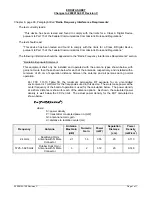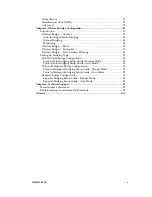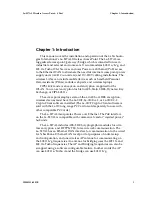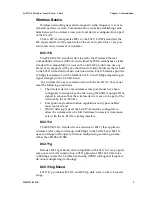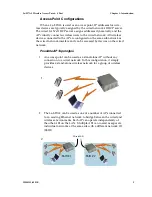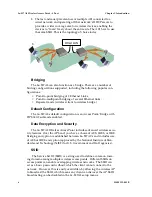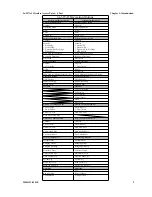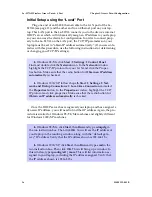
3e–527A3 Wireless Access Point – 8 Port
Chapter 1: Introduction
2
29000152-001 B
3e–527A3 Wireless Access Point – 8 Port
Chapter 1: Introduction
29000152-0001 B
3
Wireless Basics
Wireless networking uses electromagnetic radio frequency waves to
transmit and receive data. Communication occurs by establishing radio
links between the wireless access point and devices configured to be part
of the WLAN.
The 3e–527A3 incorporates 802.11a, the 802.11b (WiFi) standard, the
802.11g standard and the most state of the art encryption for a very pow-
erful and secure wireless environment.
802.11b
The IEEE 802.11b standard, developed by the Wireless Ethernet
Compatibility Alliance (WECA) and ratified by IEEE, establishes a stable
standard for compatibility. A user with an 802.11b product can use any
brand of access point with any other brand of client hardware that is built
to the 802.11b standard for basic interconnection. 802.11b devices provide
11 Mbps transmission (with a fallback to 5.5, 2 and 1 Mbps depending on
signal strength) in the 2.4 GHz band.
For wireless devices to communicate with the 3e–527A3 , they must
meet the following conditions:
• The wireless device and wireless access point must have been
configured to recognize each other using the SSID (a unique ID as-
signed in setup so that the wireless device is seen to be part of the
network by the 3e–527A3 );
• Encryption and authentication capabilities and types enabled
must conform; and
• If MAC filtering is used, the 3e–527A3 must be configured to
allow the wireless device’s MAC address to associate (communi-
cate) with the 3e–527A3 wireless interface.
802.11a
The IEEE 802.11a standard is an extension to 802.11 that applies to
wireless LANs and provides up to 54 Mbps in the 5GHz band. 802.11a
uses an orthogonal frequency division multiplexing encoding scheme
rather than FHSS or DSSS.
802.11g
Because 802.11g is backwards-compatible with 802.11b, it is a popular
component in LAN construction. 802.11g broadens 802.11b’s data rates
to 54 Mbps within the 2.4 GHz band using OFDM (orthogonal frequency
division multiplexing) technology.
802.11b/g Mixed
802.11b/g combines 802.11b and 802.11g data rates to offer a broader
range.


